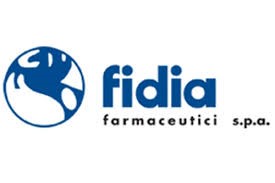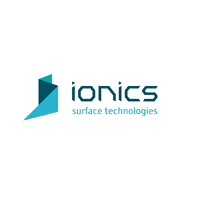Smart multifunctional Hyaluronic Acid-Carnosine based bandages for wound care and regenerative therapy
Call: M-ERA.NET 2016
Call Topic: Interfaces between materials and biological hosts for health applications
Starting date: 01 March 2018
Project duration (in months): 36
Publishable Abstract: An emerging approach for care and regenerative therapy of chronic wounds, which have an increased incidence in elderly, diabetics, immuno-suppressed and immobilised people, uses smart hydrogels for a spatio-temporally triggerred repair process. Hyaluronic acid (HyA)-based dressings are already safely used, e.g., in treating diabetic foot ulcer. The novel multifunctional HyA-CAR(GHK)-Cu dressing, deposited via an atmospheric plasma technology ad hoc designed and developed, starts from HyA conjugated with a dipeptide (carnosine, CAR) and/or a tripeptide (GHK), exhibiting inhibitory effects against carnosinase as well as antioxidant and anti-inflammatory properties. The scaffold is further implemented by the incorporation of copper, which has angiogenic and antibacterial properties, as well as SOD-like activity in the CAR-Cu and GHK-Cu complexes. The HyA-CAR(GHK)-Cu hydrogels will provide a novel unique synergic activity in the modulation of the wound healing and scar repair actions.
Project Summary: Topical therapy based on the controlled release of active principles is a key element of an effective wound care and regenerative healing. Advanced therapies aim to trigger the repair process instead of providing simple passive support, e.g., dressing materials based on polymeric hydrogels are very effective as part of a multimodal treatment approach. Hyaluronic acid (HyA), as major component of the extracellular matrix, is a natural compound that has shown efficient application already as pure dressing in treating diabetic foot ulcer (e.g., Healoderm®). The SmartHyCAR project deals with the design, preparation and characterization of a new multifunctional and smart dressing, deposited via atmospheric plasma, for enhanced wound healing and scar reduction performance. The action spans from the technology readiness level, TRL, of 1, i.e., basic principles observed, to TRL of 5, i.e., technology validated in industrially relevant environment. The system is based on a scaffold made of HyA conjugated with carnosine (b-alanyl-L-histidine, CAR) and/or glycil-L-histidyl-L-lysine (GHK), and loaded with copper ions to obtain hydrogels with a modulated angiogenic action. Copper is a known potent angiogenic factor, and has antibacterial activity. CAR-Cu complexes mimic the activity of superoxide dismutase enzyme (SOD-like system) through the disproportion reaction of the superoxide radical anion. GHK-Cu is known to accelerate the wound healing, and also to exhibit anti-inflammatory activity. The dipeptide CAR is intrinsically antioxidant and anti-inflammatory, has inhibitory activity against the HyA oxidative degradation and the free radicals produced in the inflammatory process; it it ensues itself in the wound healing process and has a chelating action towards copper(II). GHK is a tripeptide naturally occurring in human plasma, saliva, and urine, and has a strong affinity for copper binding. A current limit in the therapeutic use of CAR and GHK is their proteolytic degradation due to specific enzymes, as carnosinase and unspecific peptidases. In the framework of technology concept formulated and experimental proof of concept TRLs, the strategy of covalent conjugation to the hyaluronan matrix is therefore very advantageous in terms of the protective action against the loss of peptide activity. Moreover, low- and high-molecular weight ranges of HyA, known respectively for pro-angiogenic and anti-angiogenic behaviour, will be used to prepare the HyA-CAR(GHK)-Cu macrochelate hydrogels at different loading ratio of peptides and copper. The multifunctional and smart character of such new hydrogels is expected to achieve a modulation in wound healing and scar repair actions. The physico-chemical characterization of the prepared systems, in terms of chemical structure (including nuclear magnetic resonance, NMR; electron paramagnetic resonance, EPR; micro-Raman; X-Ray photoelectron spectroscopy, XPS), surface free energy, intrinsic viscosity, viscoelasticity (by quartz crystal microbalance with dissipation monitoring, QCM-D), morphological and nano-mechanical properties (by atomic force microscopy, AFM), will be implemented by biological assays of enzymatic degradation with respect to carnosinase, peptidases and hyaluronidase. Scanning confocal microscopy (LSM) and AFM will be used to obtain a new knowledge on the processes occurring at the interface between the prepared biomaterials and model membranes. Moreover, in vitro angiogenic studies will be performed. Atmospheric plasma technology will be validated in lab and in industrially relevant environment for the coating of dressings with the HyA-CAR(GHK)-Cu hydrogels that will be validated by in vitro and in vivo tests, firstly on the prototypes and then on the final products. Following the obtained results, a dedicated atmospheric plasma reactor will be designed and constructed for a pilot industrial activity in the advanced wound healing market, which include sterility and packaging issues.
Consortium Overview
|
Organisation Details |
||||
|
Partner name (Full name) |
Coordinator (P1) University of Catania |
Partner 2: Fidia farmaceutici S.p.A. |
Partner 3: Université libre de Bruxelles |
Partner 4: IONICS |
| TRL at Project Start | TRL 1 | TRL 2 | TRL 2 | TRL 3 |
| TRL at Project Targer | TRL 4 | TRL 5 | TRL 5 | TRL 5 |
| Organisation Type | HE | IND | HE | SME |
| Website | unict.it/en | fidiapharma.com/en/ | ulb.be/ | ionics-group.com/en |
| Region / Country | Italy | Italy | Belgium | Walloon Region / Belgium |
| Organisation Registration Number | 02772010878 | 00204260285 | 0407626464 | 0472056933 |
| Size (employees) | 570 | 23 | ||
| Turnover (k€) | 179848 | 3000 | ||
|
Contact person |
||||
| Title / Name | Prof. Cristina Satriano | Dr. Susanna Vaccaro | Prof. François Reniers | Dr. Laurent Geron |
| Telephone | +39-095-7385136 | +39-0931-812802 | +32-2-6503116 | +32-4-2781960 |
| csatriano@unict.it | svaccaro@fidiapharma.it | freniers@ulb.ac.be | laurent.geron@ionics.be | |
|
Funding Organisation (FO) |
||||
| Name of FO + person contacted in FO |
MIUR
|
MIUR
|
Wallonia Public Service (DG06) – Cédric VOLCKE | Wallonia Public Service (DG06) – Cédric VOLCKE |
| Funding Programme (full name) | Fondo per gli Investimenti nella Ricerca Scientifica e Tecnologica (FIRST/FAR) | Fondo per gli Investimenti nella Ricerca Scientifica e Tecnologica (FIRST/FAR) | General Programme for International Research | General Programme for International Research |
 |
 |
 |
 |